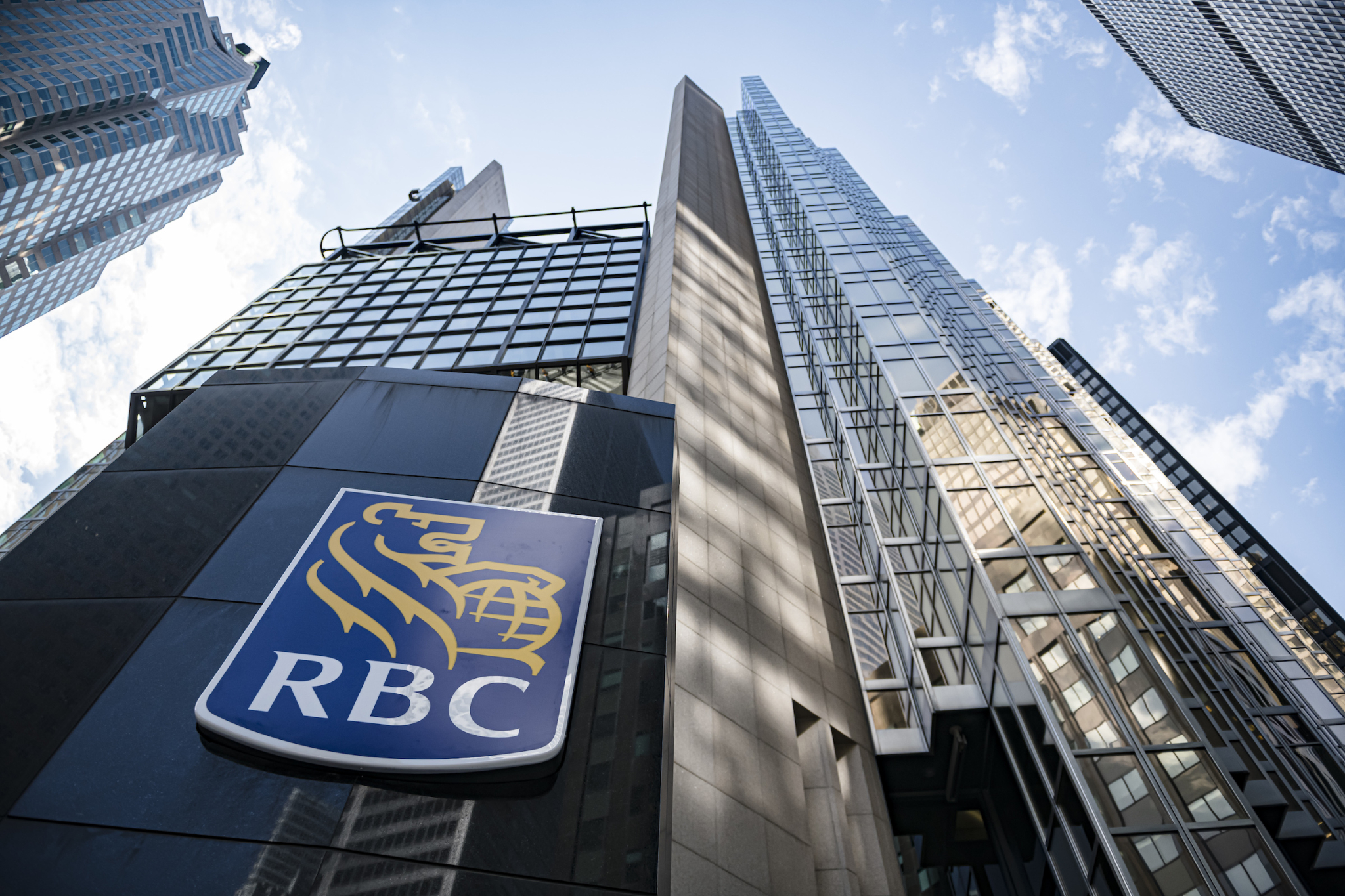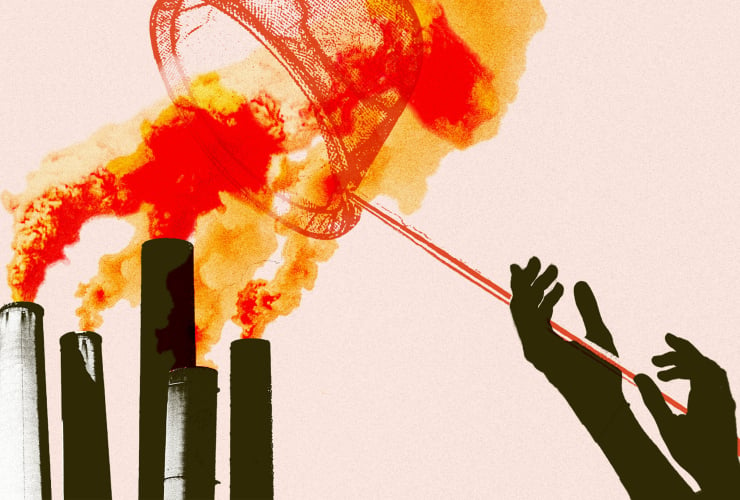Inform. Engage. Act. is written in bold letters on the newly founded Royal Bank of Canada (RBC) Climate Institute’s website, its mission to “inspire Canada’s net-zero journey.” At first glance, the ugly early 2000s style website looks like it could belong to an environmental group.
When the news came out that RBC was also the largest financier of fossil fuels in the world, stories abounded framing the bank as hypocritical. RBC has long portrayed itself as a climate leader — or a “thought leader” — covering billboards, TV screens and even university campuses with its net-zero commitments.
Over 600 fossil fuel industry lobbyists were at last year’s UN climate summit — making them the largest constituency — obstructing calls for loss and damages from nations in the Global South and advocating instead for carbon markets and investments in carbon capture. By now, corporations are a familiar presence at climate conferences and other climate negotiations. It was not always this way.
With the rise of neoliberalism, we transitioned at a global scale from a “polluter pays” framework to a nebulous framework of universal responsibility, culminating in our current “net-zero” paradigm. Net-zero commitments have gone from a trickle to a flood in recent years, with thousands of nations and institutions across the world — including oil companies — pledging to reach net-zero by 2050.
While RBC and ExxonMobil’s steadfast commitment to a net-zero world might seem hypocritical, there is a far more dangerous possibility: the company’s profits and net-zero rhetoric are not incompatible at all. A world with more expansion, more fossil fuels and more emissions is exactly what “net-zero” is designed to enable.
Economics is all about zero-sum games. Corporations try to have net-positive wealth on paper even while they balance mountains of debt. However, these games of balancing spreadsheets and clever accounting tricks often do not lend themselves well to real world issues. We don’t, for instance, want “net-zero” tuberculosis or child labour. We could imagine those terms meaning many different things, none of them equivalent to real zero.
While the terminology “net-zero” has become a normalized part of the discussion of climate change, it is worth reflecting on how bizarre the concept really is — a testament to an Alice in Wonderland world where financial experts are the decision-makers on every issue regardless of who the stakeholders are.
It matters not the question, capitalism is always the answer.
My own university, the University of Toronto recently announced its commitment to reduce more greenhouse gas emissions than it produces to be "climate positive" by 2050, which accounts for its aggressive expansion plans. The breathtaking images of forests, sheets of ice and tall prairie grasses that often accompany these announcements suggest that net-zero plans entail tree planting and other nature-based solutions that promote biodiversity.
This is misleading.
It has been well-established that there is not nearly enough land on Earth to accommodate all the existing net-zero pledges. Of course, there will need to be many more net-zero pledges to avoid blowing past 1.5 C of warming. We cannot tree-plant our way out of climate change.
Part of the benefit of “net-zero” for large institutions is the ambiguity: it does not require you to spell out how you will achieve such a feat, which is often less pretty than the advertisements. “Net-zero” functions perfectly under capitalism: corporations are experts at exploiting ambiguity.
Earlier climate agreements, like the Kyoto Protocol, set emission reduction targets, which are entirely absent from net-zero targets. In the University of Toronto’s case, its “climate positive” plan is to reduce campus emissions by 80 per cent by 2050 and generate energy on university-owned properties. This falls far short of the bold action we need from wealthy universities for us to meet the Paris Agreement.
Most corporate net-zero pledges do not specify how much they will reduce their emissions — probably because they do not plan to reduce emissions at all — nor do they provide any details on how they will achieve the zero in net zero beyond cruelly optimistic statements about carbon capture.
Carbon capture technology is still in its enfancy and not being developed for widespread use. It is intended for very specific circumstances, such as the emissions that result from fertilization – not as a catch-all solution to climate change.
Indeed, the Intergovernmental Panel on Climate Change (IPCC) confirmed that carbon capture and sequestration is the most expensive and least effective climate change solution. Politicians and companies that promise carbon capture are gambling on some future innovation to save us, all while they continue to emit carbon, doing business-as-usual and wreaking havoc on front-line communities across the world. In the race to prevent 1.5 degrees of warming, carbon capture is the “Hail Mary” approach.
This is a death sentence for some.
The other option when an institution like the University of Toronto says it will be "climate positive" is to outsource the emission cuts to university-owned properties.
The most common way to outsource emissions is by buying carbon offsets. Carbon markets are one of many nature-based climate solutions, which promote forests, wetlands and other terrestrial and marine ecosystems as “carbon sinks” that absorb greenhouse gases.
Of course, a forest exists, absorbing carbon prior to purchase, so buying one hardly counts as offsetting emissions. Carbon markets are rife with these clever accounting schemes. In reality, carbon offsets are highly unregulated and often fall short of the promised emission reductions.
Even when they do achieve the desired emission reductions, these reductions are almost always temporary. In some cases, the rising risks of wildfires and droughts mean that nature-based carbon offsets are at risk of becoming carbon emitters by the mid-century.
Carbon markets have also been heavily criticized by Indigenous land defenders as false solutions encouraging the privatization and theft of Indigenous lands to sell as offsets. These schemes treat non-human populations as a means to an end; their value is reduced to their capacity to store carbon for us.
Such an approach is at odds with Indigenous law affirming the inherent sovereignty of non-human beings and suggests that biodiversity might be profitably sacrificed in favour of species that absorb more carbon. Someone always has to pay.
RBC listed one of its sustainable investments last year as an Enbridge (yes, the pipeline company) “sustainability-linked” bond — a bond which, unsurprisingly, turned out to be of dubious quality. The transition that institutions like RBC imagine is not really a transition away from fossil fuels at all — it is a transition to a world of privatization, economic games and empty promises.
Embracing “net-zero” promises us a fossil fuel-friendly fix in a world where corporate interests seem increasingly hard to overcome. But climate change was caused by the same capitalist logic that “net-zero” represents. When we forget this, we risk repeating the mistakes that got us here to begin with.
Amy Mann is a student and climate justice organizer at the University of Toronto researching atmospheric physics.
Updates and corrections
| Corrections policyThis op-ed has been updated to clarify the university's timeline for reducing emissions, to make clear that rather than a net-zero plan, the university says it has a "climate positive" plan, and to specify that the offsets are planned for university-owned properties.
Thanks Amy.
Thanks Amy.
Are there any faculty members reading this who could figure out a way to up the pressure on their institutions and on RBC?
We should not be forgiven.






Comments